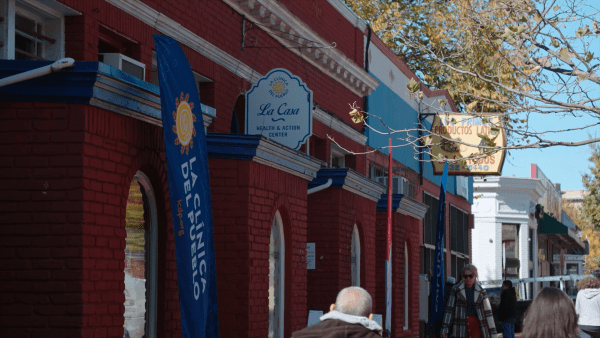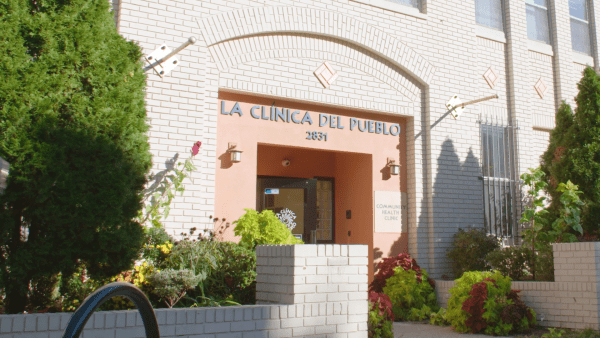Stories from the Field: Luizilda de Oliveira
Hi, please tell us a little about yourself.
My name is Luizilda de Oliveira, and I’m the director of nursing and care management at La Clínica Del Pueblo. My role at La Clínica Del Pueblo has been to develop the nursing and care management department. It’s been like standardizing workflows for the delivery of care while focusing on clinical and social determinants of health.
How has care management evolved since the start of Bridging the Gap: Reducing Disparities in Diabetes Care?
Care management has evolved since the start of Bridging the Gap: Reducing Disparities in Diabetes Care. If we looked at how we managed diabetes before this grant, and then how we organize our care team, there’s a lot to say about practice transformation.
The grants looked at a small subset of patients. So, we were able to implement the best practices with the clinic flow. Even if a patient was not part of Bridging the Gap: Reducing Disparities in Diabetes Care, we looked at them the same which helped us evolve. La Clínica is known for care management because we have worked with Ryan White clients, for many years. At the time we were mainly looking at patients living with HIV, but care management activities allowed us to be able to look at standards of care in the centers of care, say a diabetic patient needs X, Y, and Z, regardless if they’re HIV positive. Some of the principles that we had from the beginning helped us a lot and even training, our team to be able to say each condition is as similar as HIV. HIV and diabetes have a lot of long-term side effects. That was a really important message to give to our team. That was kind of a shift. We know people are like, “Oh, diabetes is as important.” I was like, “Yes!”
With diabetes you can lose your sight, you can lose your sensation. So, that is to make sure that our team could march in the same direction.
What positive changes helped improve diabetes care for patients?
I think it was when we started to use PRAPARE. PRAPARE is the protocol for responding to and assessing patients’ assets, risks, and experiences. It has subsets of questions that are looking at different areas of social determinants of health, like lack of transportation, and literacy so it’s just having the smart form, formulating a score is very helpful for the team as well, whereas before we used to create templates with PRAPARE it’s Like when I want to review where our patients are trending to, I can get all of the PRAPARE results.

It’s really, really easy when we compare to previous years, we used to have drop-down questions and that was very complicated. So, using the PRAPARE tool has been a game-changer for all of us.
How has care management evolved since Bridging the Gap: Reducing Disparities in Diabetes Care?
Our team here in the clinic focuses on both medical and social needs when providing care to diabetic patients. Because not all patients that have diabetes have care management. But one of the interesting things is to talk about social determinants of health. Do they have food? Is food insecurity an issue? And then so, is the food insecurity an issue, then let’s connect those patients to a care coordinator. They’re not going to provide the care coordination for a long time, but then they can provide the resources and be able to tell the team there’s a patient. Do they have insurance? Make sure that the insurance is active in the system. The most interesting thing when you work or not team-based care is that everybody always knows something about the patient that nobody else knows.
How has COVID-19 Changed your work in diabetes care?
It has changed a lot! It’s changed a lot because there’s this element of before, I could tell a patient, “Did you pick up your medication?” “Yes, I did.” Then I’ll call the pharmacy and they will be like, “Oh yeah, they picked it up.” Or “They picked up the long-acting insulin, not the short-acting insulin.” Before I would be like, “Okay, bring me your medication so I can look at it.” It will be super easy. They would just walk into the clinic and they’ll be like, “I have two minutes…” and I’ll be like, “I have five.” And then we’ll exchange that (information) with a nurse. Now, we do not have the opportunity of seeing each other.
But then the most interesting thing now is when you pick up your prescription. I ask, “Can you text me a picture?” I think that at the beginning of the pandemic, we started to use One Talk through Sprint so we could text patients back and forth. So, we were shifting all the time and I was shifting along.
Are there lessons or changes from the pandemic that we should carry forward in diabetes care?
I have to say there’s a couple of things that have come through and, you know, in things that we’re doing, I think one is telehealth. Telehealth should not go anywhere. It is allowing us to seek care a little bit differently. I have patients for example, that are so they’re so lonely and on this side of the world. They might be able to go to their countries for three months and their insurance company will actually provide the medication and then they can have their appointments from there. One of the things that I really would like to see in the care of diabetes is for clinics like us to be able to get funding, to do remote monitoring for diabetic patients. I think that that will be another game-changer.
One thing that is really challenging is to shadow people from their houses and get them to come to appointments. If the provider can get the blood sugar results electronically and you can actually look at the trends. We are looking at a couple of things. Decrease of lost wages because every single time a patient comes to an appointment, they have to finance transportation, they have to ask for permission at work, and a lot of them are living paycheck to paycheck. Food access as well. We can then say, “You know, we see that your A1C or your blood sugar is not well controlled. There is this place where we can apply for these benefits, or you can get some fresh food.” So, I think those are the things that really will be able to help in the future and spending less time being in the clinics and being solved here. 
I think the pandemic in itself has just woken a lot more problems, social and clinical. We need space in time to be sure that we can be efficient procedures like telehealth, remote monitoring for hypertension, and diabetes. Make sure that we have platforms where we can track our patient’s benefits without making a lot of phone calls, because like nobody’s answering their phone lately. We can easily go into different platforms to be able to figure out that referral that I made to SNAP. Is it there? Has it been approved? I feel some kind of a way when people say “When we go back to normal.” I’m like, “No, no, no, no!” There is no normal to go back cause that normal was not working. So, we need to find a new normal and healthcare and this new normal is to look at innovation, look at technology, not that technology will solve all the problems, but technology will be a vehicle of collaboration with our patients. Sometimes we think that elderly patients might not be able to use a Bluetooth-enabled glucometer, but with proper teaching and having a team that is dedicated and is open to helping it’s we’re truly going to get there.
